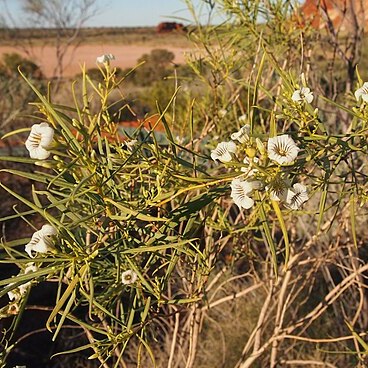A medium sized shrub which keeps growing from year to year. It grows 2.4 m high and spreads 2.4 m wide. The bark is corky and brownish-yellow to purple. The leaves are sword shaped and dark green. The flowers are bell shaped. They are white with purple stripes. The fruit is a round, black berry.

